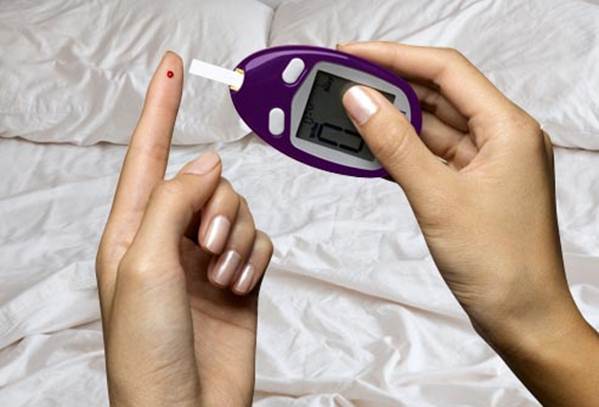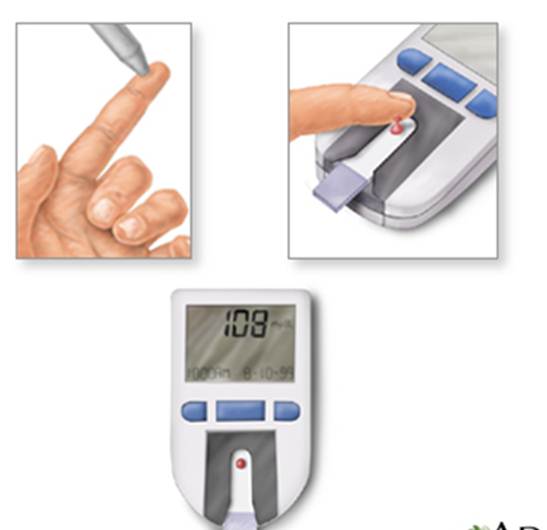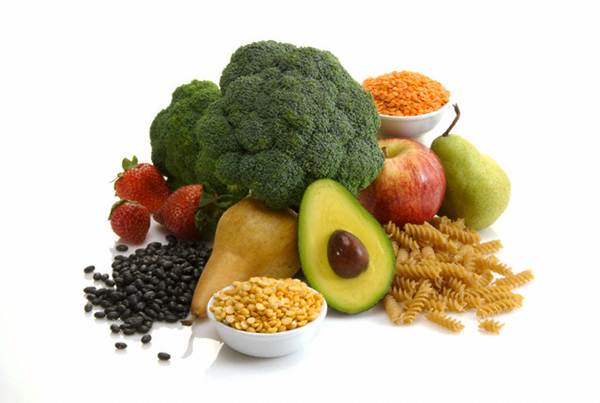Do some experimenting to discover how meals
affect blood glucose levels
Predicting how much blood glucose levles will
rise or fall in response to meals involves a few variables. These include how
much and what you eat, and the amount of insulin in your blood (whether your
own, injected, or pumped). Every person’s body is a little bit different in how
it turns various kinds of food into energy and in how it uses that enregy.
People with diabetes who’d like to learn more about food and lowering their
blood glucose levels can become scientists specializing in their own bodies.
Ready to put on your lab coat?

Ready
to put on your lab coat?
Why test?
Not every person with diabetes needs to embark
on an odyssey of self-discovery. But, apart from curiosity, there are good
reasons why it might be time to do some experimenting. “If you A1C [average
blood glucose level over the previous two to three months] isn’t where you want
it to be, then you need to look at what’s happening throughout the day,” says
Monica Joyce, MS, RD, LDN, CDE, of Sobel Medical Associates in Chicago. Joyce
also recommends taking some readings if you’re trying to lose weight, as the
types of foods you eat and your body size may change, affecting blood glucose
levles. Starting a new medication or stopping one are also reasons for extra
glucose testing.
The protocol
Joyce suggests keeping a close eye on what you
eat and your blood glucose levels for a couple of weeks at a time to get a
sense of blood glucose behavior. If your access to test strips is limited, ask
your health care provider for a prescription for test strips or the strips
themselves. Then, try experimenting for just four or five days, making sure to
include weekdays with routint meals and weekends that feature your favorite
foods. To get a complete blood glucose picture of a meal, you’ll need two blood
glucose checks: one before and one after you eat.

To
get a complete blood glucose picture of a meal, you’ll need two blood glucose
checks: one before and one after you eat.
Data analysis
A general goal blood glucose level for one to
two hours after a meal, according to the American Diabetes Association, is
under 180 mg/dl; some experts recommend lower targets – ask your provider
what’s best for you. if your data reveal that it’s frequently going much higher
than that, joyce says, you can look into adjusting things.

A
general goal blood glucose level for one to two hours after a meal, according
to the American Diabetes Association, is under 180 mg/dl
·
Portions perfected
On the plus side,
you may not have to give up the foods you like. You can reduce the portion of
an item rather than give it up, says Joyce: “No one wants to take favorite
foods away from people.” Besides trimming portion sizes, choose healthful
fruits, vegetables, and whole grains rather than foods with added sugar for
your carbohydrate choices.
·
Medication management:
If your data show
that blood glucose levels are high before meals or in the morning (fasting
blood glucose)), it may indicate that your medication needs to be adjusted to
reach blood glucose targets. “The four0hour period of time between meaks should
have given the insulin or medication the time to bring the blood sugar down to
normal,” says Joyce. You and your provider can use this information to
fine-tune medication, particularly insulin, based on blood glucose levels
before the next meal. Joyce says premeal testing can also help people trying to
control their blood glucose with diet alone see if their approach is working.
Tips to treat
After-meal highs
To get blood glucose levels back down under
180 mg/dl within an hour or two after a meal, experiment with these tactics:
·
Count calories
Monica Joyce, MS,
RD, LDN, CDE, suggests rigorously monitoring calorie and carbohydrate intake
for a week or so. That will help identify if you’re eating more than you
thought and cement in your mind what an appropriate portion size looks like.
·
Eat high-fiber foods
Some evidence
suggests that high-fiber foods, such as beans, whole grains, and some
vegetables, can blunt blood glucoe increases. Plus, they’re extra filling, so
they’ll help you eat less.

Eat
high-fiber foods
- Take enough insulin: If you use mealtime insulin, ask your provider if your premeal
dose is adequate for the number of carbohydrate grams you’re consuming.
Also discuss how to calculate a correction dose and when one may be
necessary. If your premeal blood glucose is high, work on that first.
- Take a 30-minute walk after eating: This can help people with type 1 or type 2 diabetes burn some
extra glucose from a meal.